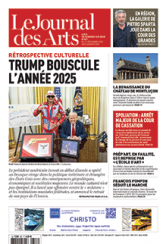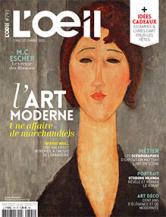PARIS
Paris. The surface area of the building occupied this year by Paris Internationale – a former call-centre spanning 5,000 square metres – might give the impression that the small alternative fair is having a growth spurt for its 9th edition.
Such, however, is not the case. With 71 exhibitors – 66 galleries and 5 non-commercial projects –, its size is nearly the same as that of last year’s event. It is comparable to that of the 2017 edition, which assembled 70 participants on the premises of the newspaper Libération. “We can accommodate 100 galleries and even more, but a relatively confidential scale is one of our fair’s distinctive features,” assures the event director, Silvia Ammon. “Each year, the gallery exhibitors tell us how much they appreciate the quality of encounters that the gathering provides.”
A fair for up-and-comers, Paris Internationale offers visibility to young galleries such as – among the 19 newcomers in this edition – Empty Gallery (Hong Kong), to feature works by Wunkwan Tam including sculpture, video and installation art. And Niru Ratman (London), also participating for the first time. The London-based gallery presents Adham Faramawy, who won the 2023 Frieze Artist Award in London last June.
The event also now asserts its multi-generationalism. It welcomes established galleries that are regularly selected by Art Basel, such as the Berlin-based ChertLüdde – which also appeared at the FIAC – and BQ. Whereas BQ presents group exhibitions at Art Basel, the German gallery will attend Paris Internationale to promote the work of a single artist: this time, Raphaela Vogel. The less expensive price of a booth – 14 000 euros for 50 square metres – enables the exhibitors to take the risk of singling out one focus that otherwise would not be cost-effective. “We make it possible for these recognised galleries to make different strategic decisions,” explains Silvia Ammon. Moreover, the organisation encourages solo shows, a format adopted by half of the participating galleries, and limits the number of artists displayed at each booth to three: Marc Camille Chaimowicz at Gaga (Mexico City), Matthias Groebel at Schiefe Zähne (Berlin), Nicole Gravier at Ermes-Ermes (Rome), and so on. While several of these featured names belong to a generation which appeared on the scene in the 1970s, Paris Internationale stands by its identity as a trailblazer. Mara Wohnhaas, presented by BQ, was one of the notable discoveries of the previous edition.
To demonstrate that the formula is well-oiled – in addition to a programme of “talks” and guided tours led by personalities from the art world (“daily dérives”) –, Paris Internationale joins forces for the second consecutive year with the Centre national des arts plastiques (Cnap) for the art project “Maintenant !” (“Now!”), which showcases the work of four artists. The drawback? Africa will be conspicuously absent from this edition. The fair is well aware of that shortfall and is working to fill that gap next year. But to do that requires prospecting and a pipeline. After all, Paris Internationale remains a small enterprise.
Cet article a été publié dans Le Journal des Arts n°618 du 6 octobre 2023, avec le titre suivant : Paris Internationale, influential and intimate








